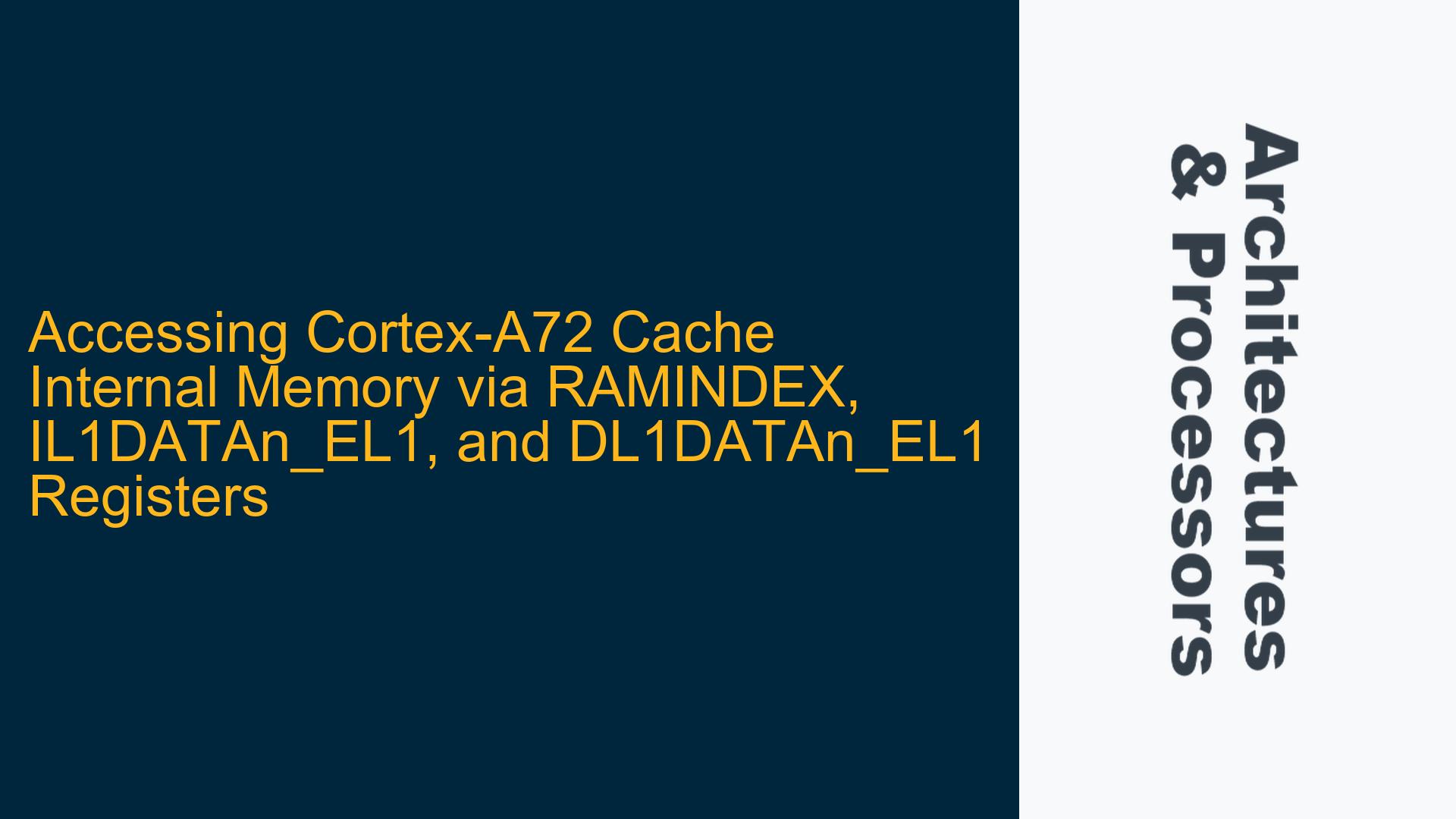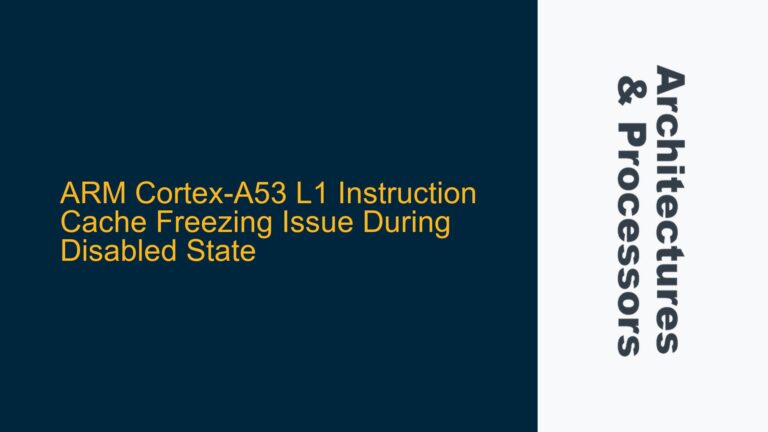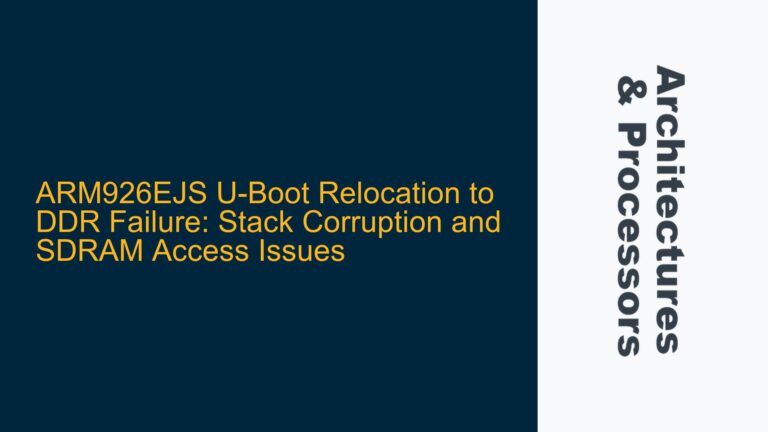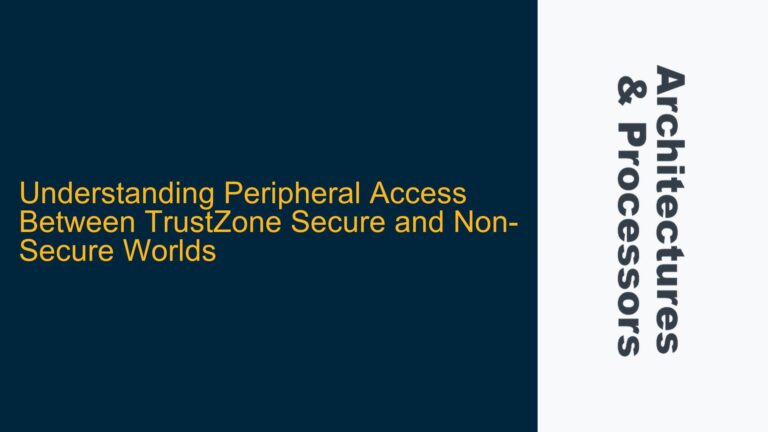Cortex-A72 Cache Internal Memory Access Mechanism
The Cortex-A72 processor, part of ARM’s Cortex-A series, is a high-performance CPU designed for advanced applications requiring significant computational power. One of the critical features of the Cortex-A72 is its cache architecture, which includes Level 1 (L1) instruction and data caches, as well as a unified Level 2 (L2) cache. Accessing the internal memory of these caches can be essential for debugging, performance optimization, and low-level system diagnostics. However, direct access to cache internal memory is not straightforward and requires the use of specific system registers.
The Cortex-A72 provides a set of registers that allow developers to access the internal memory of the L1 instruction and data caches. These registers include RAMINDEX, IL1DATAn_EL1, and DL1DATAn_EL1. RAMINDEX is used to specify the cache way and index, while IL1DATAn_EL1 and DL1DATAn_EL1 are used to read the data from the instruction and data caches, respectively. Understanding how to use these registers is crucial for anyone looking to perform low-level cache operations on the Cortex-A72.
The RAMINDEX register is particularly important as it determines which cache line and way are being accessed. The IL1DATAn_EL1 and DL1DATAn_EL1 registers then provide the actual data stored in the specified cache line. These registers are part of the AArch64 system register set and can only be accessed in privileged modes (EL1 or higher). Proper usage of these registers requires a deep understanding of the Cortex-A72 cache architecture, including the organization of cache ways, sets, and lines.
RAMINDEX, IL1DATAn_EL1, and DL1DATAn_EL1 Register Configuration and Usage
The RAMINDEX register is a 32-bit register that specifies the cache way and index for accessing the L1 instruction or data cache. The register is divided into fields that determine the cache set, way, and other parameters necessary for accessing the cache memory. The exact layout of the RAMINDEX register can be found in the ARM Architecture Reference Manual for the Cortex-A72.
The IL1DATAn_EL1 and DL1DATAn_EL1 registers are used to read the data from the L1 instruction and data caches, respectively. These registers are also 32-bit wide and contain the data from the cache line specified by the RAMINDEX register. The IL1DATAn_EL1 register is used for reading instruction cache data, while the DL1DATAn_EL1 register is used for reading data cache data. Both registers are part of the AArch64 system register set and can only be accessed in privileged modes.
To access the cache internal memory, the following steps must be followed:
- Set the RAMINDEX register to specify the cache way and index.
- Read the IL1DATAn_EL1 or DL1DATAn_EL1 register to obtain the data from the specified cache line.
The RAMINDEX register must be configured correctly to ensure that the correct cache line and way are accessed. The IL1DATAn_EL1 and DL1DATAn_EL1 registers will then provide the data stored in the specified cache line. It is important to note that these operations are highly privileged and should be performed with caution to avoid unintended side effects on the system.
Implementing Cache Internal Memory Access in Cortex-A72 Firmware
Implementing cache internal memory access in Cortex-A72 firmware involves writing low-level code to configure the RAMINDEX, IL1DATAn_EL1, and DL1DATAn_EL1 registers. This code must be executed in privileged mode (EL1 or higher) and should be carefully designed to avoid disrupting the normal operation of the cache and the system.
The first step in implementing cache internal memory access is to configure the RAMINDEX register. This involves setting the appropriate fields in the register to specify the cache way and index. The exact values to be set in the RAMINDEX register depend on the cache configuration and the specific cache line and way that need to be accessed.
Once the RAMINDEX register is configured, the next step is to read the IL1DATAn_EL1 or DL1DATAn_EL1 register to obtain the data from the specified cache line. This data can then be used for debugging, performance analysis, or other low-level system diagnostics. It is important to ensure that the cache line being accessed is not currently in use by the processor to avoid data corruption or other unintended side effects.
The following is an example of how to implement cache internal memory access in Cortex-A72 firmware:
// Set the RAMINDEX register to specify the cache way and index
MOV X0, #0x00000001 // Example value for cache way and index
MSR RAMINDEX, X0
// Read the IL1DATAn_EL1 register to obtain the data from the specified cache line
MRS X1, IL1DATAn_EL1
// Read the DL1DATAn_EL1 register to obtain the data from the specified cache line
MRS X2, DL1DATAn_EL1
This code sets the RAMINDEX register to a specific value and then reads the IL1DATAn_EL1 and DL1DATAn_EL1 registers to obtain the data from the specified cache line. The data obtained from these registers can then be used for further analysis or debugging.
In conclusion, accessing the internal memory of the Cortex-A72 cache requires a deep understanding of the cache architecture and the use of specific system registers. By properly configuring the RAMINDEX, IL1DATAn_EL1, and DL1DATAn_EL1 registers, developers can access the cache internal memory for debugging, performance optimization, and low-level system diagnostics. However, these operations should be performed with caution to avoid unintended side effects on the system.






